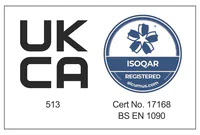Older steel-framed houses sometimes suffer from poor insulation due to the building techniques that were used in decades gone by.
The problem can be caused by concrete walls that do not offer a cavity to insulate, and don’t have the same thermal mass as other types of solid wall construction.
External insulation for steel-framed houses is a good solution to this, but it’s important to make sure the walls have space to ‘breathe’ in order to avoid creating a new problem due to condensation damp.
Luckily there is a relatively straightforward way to achieve this, in the form of cavity rail external insulation, which creates a small cavity between the original wall and the new outer layer of insulated cladding.
How to install external insulation on a steel-framed house
A cavity rail system is not attached directly to the existing wall. Instead, narrow rails are fitted to the structural steel frame of the property to support the exterior cladding.
The insulated cladding boards are then installed into this exterior rail frame, rather than directly to the walls of the building.
Between the two is a cavity usually of a minimum of 20mm wide, which allows air to circulate and crucially allows moisture to escape from the original walls of the building.
Condensation is less able to build up using this method, and therefore damp problems should not occur following the installation of external insulation to the steel frame.
External cladding options for steel-framed properties
In principle, there are no additional limits on the types of external cladding options for steel-framed properties than there are on other external insulation installations.
Property owners can specify textured and coloured renders or weatherboards, creating a variety of possible appearances for the building.
An alternative for a more traditional look is to add brick slips – thin veneers of brick that can be fitted like tiles to give a natural brick wall effect complete with mortar pointing.
Structural steel frames allow rapid and reliable construction of properties – and with options like exterior insulation cladding, there is no reason not to choose a steel-framed structure due to worries about heating, condensation or energy efficiency.


